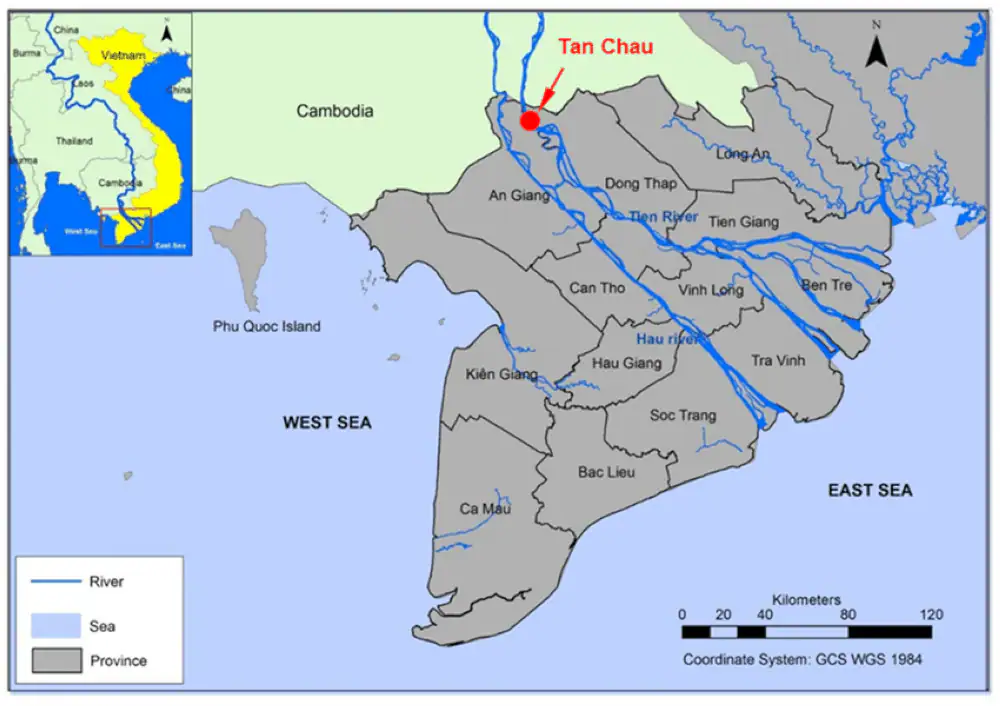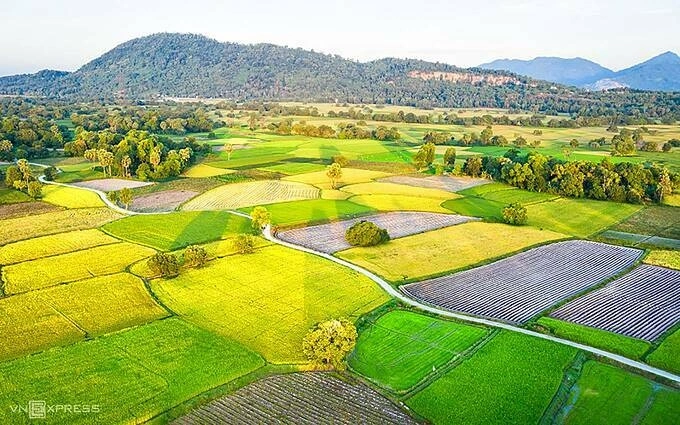Discover the beauty of the Mekong Delta in Vietnam with our complete 2026 travel guide, designed for first-time visitors. Explore floating markets, river cruises, and local culture with comfort and confidence.
Mekong Delta Travel Guide – An Overview
Quick facts and Geography
The Mekong Delta stretches across 13 provinces in southern Vietnam, covering over 39,000 square kilometers. It begins where the mighty Mekong River branches out into a complex network of waterways before reaching the South China Sea. This natural labyrinth nourishes fertile rice fields, tropical fruit farms, and vibrant floating markets.
The region’s main hubs include Can Tho, Ben Tre, Chau Doc, and Tra Vinh, each offering its own blend of culture and scenery. For first-time visitors, these destinations provide a comfortable yet enriching introduction to rural Vietnam.
This Mekong Delta Travel Guide helps travelers understand the region’s geography and why its vast waterways define life in Southern Vietnam.
Historical and Cultural significance
For centuries, the Delta has been a trading hub and agricultural powerhouse. It’s home to diverse ethnic communities, including the Khmer and Cham people, whose customs and architecture still flourish today. Ancient pagodas, stilted houses, and colorful festivals all reflect a deep connection to the river that sustains them.
Including these traditions in your Mekong Delta Travel Guide itinerary ensures a deeper appreciation of the region’s rich cultural layers.

Why the Mekong Delta Should Be on Your Vietnam Travel List?
Our Mekong Delta Travel Guide 2026 reveals why this region remains one of Vietnam’s most authentic destinations.
Nestled in southern Vietnam, the Mekong Delta is a captivating mosaic of rivers, canals, and lush landscapes that form the lifeblood of the country’s agriculture and culture. For first-time visitors visiting Vietnam for the first time, the Mekong Delta travel experience offers a balance between serenity and authenticity. Here, you’ll find a slower pace of life, warm hospitality, and a window into traditional Vietnamese living that contrasts beautifully with the urban buzz of Ho Chi Minh City.
Known as the “Rice Bowl of Vietnam,” this region is not just a place of scenic beauty but also a cultural crossroads where Khmer, Chinese, and Vietnamese traditions intertwine. Whether you’re cruising gently down the river, exploring floating markets at dawn, or enjoying a sunset meal aboard a sampan, every moment in the Mekong Delta invites reflection and wonder.

Planning Your Mekong Delta Trip in 2026
Best time to visit Mekong Delta for comfort and authenticity
The most pleasant time to visit is from November to March, when temperatures are moderate, and rainfall is low. The dry season allows for smooth travel and comfortable river excursions. The wet season (May to October) brings lush scenery and fewer tourists – ideal if you prefer tranquility over crowds.
Timing your trip right is one of the key insights in any Mekong Delta Travel Guide, helping visitors experience both comfort and authenticity.
How to get to the Mekong Delta from Ho Chi Minh City
Most travelers start their journey from Ho Chi Minh City, about 2-4 hours away by car or bus, depending on their destination. Private transfers are ideal for older travelers seeking convenience, while organized tours offer guided insights. Alternatively, you can fly into Can Tho International Airport, which connects directly to Hanoi and other major cities.
Choosing the right travel style for travelers
Private tours vs Group excursion
Private Mekong delta tours offer flexibility and personalized service – perfect for travelers over 50 who value comfort and pace. Group tours can be enjoyable for those seeking social experiences but may require more stamina and flexibility with schedules.
A detailed Mekong Delta Travel Guide helps travelers choose between private tours, small group experiences, or longer river cruises.
Cruise experiences and Luxury options
Consider a Mekong Delta River cruise lasting from one to three days. Luxury options like Aqua Mekong and Mekong Eyes provide air-conditioned cabins, fine dining, and cultural excursions, ensuring both comfort and authenticity.
FAQs about the Mekong Delta tour
Below are the most common questions we answer in our Mekong Delta Travel Guide to help you plan efficiently.
How many days should I spend in the Mekong Delta?
A 2-4 day trip is ideal for first-time visitors, allowing time to explore several provinces and experience river life at a relaxed pace.
>>>> See more: Our suggested Mekong Delta itinerary
Is the Mekong Delta suitable for older travelers?
Absolutely. Most tours are low-impact and designed for comfort. Private car transfers, luxury cruises, and homestays with modern amenities make it easy for travelers over 50.
What is the best way to explore the Delta?
A combination of river cruises, cycling tours, and guided village visits provides the most authentic and balanced experience.
What should I pack for the trip?
Light clothing, a wide-brimmed hat, sunscreen, insect repellent, and comfortable shoes are essential.
Can I visit the Delta all year round?
Yes, though the dry season (November-March) offers the best weather for sightseeing and cruising.
Is the Mekong Delta safe for solo travelers?
Yes. The region is friendly and welcoming, with excellent hospitality. Solo travelers often find it easy to connect with locals and fellow visitors.
Plan Your Journey with Purpose
Make your next journey more than just a getaway. By booking through a local tour Vietnam operator or an eco travel agency Vietnam, you’re not just taking a trip, you’re supporting environmental education, habitat preservation, and ethical tourism.
Contact us to create your ideal itinerary. Let us help you craft a Mekong Delta travel guide itinerary with local guides, including eco-friendly homestays, organic farming experiences, and cultural exchanges.
Vietnam Responsible Tourism is a travel agency that associates with different Community-based Tourism groups with the aim to improve living conditions in remote mountain regions of Vietnam since 2017.



